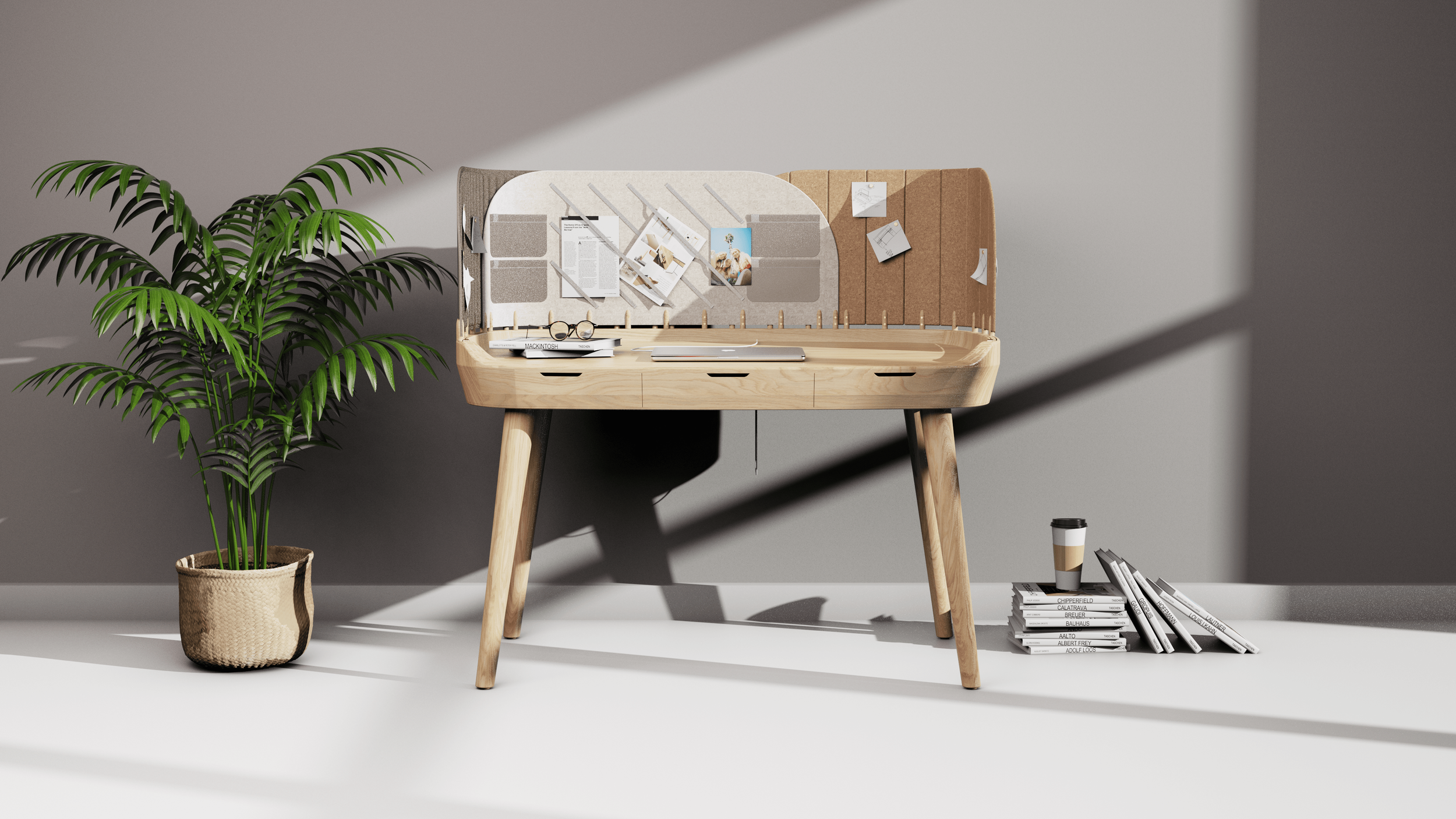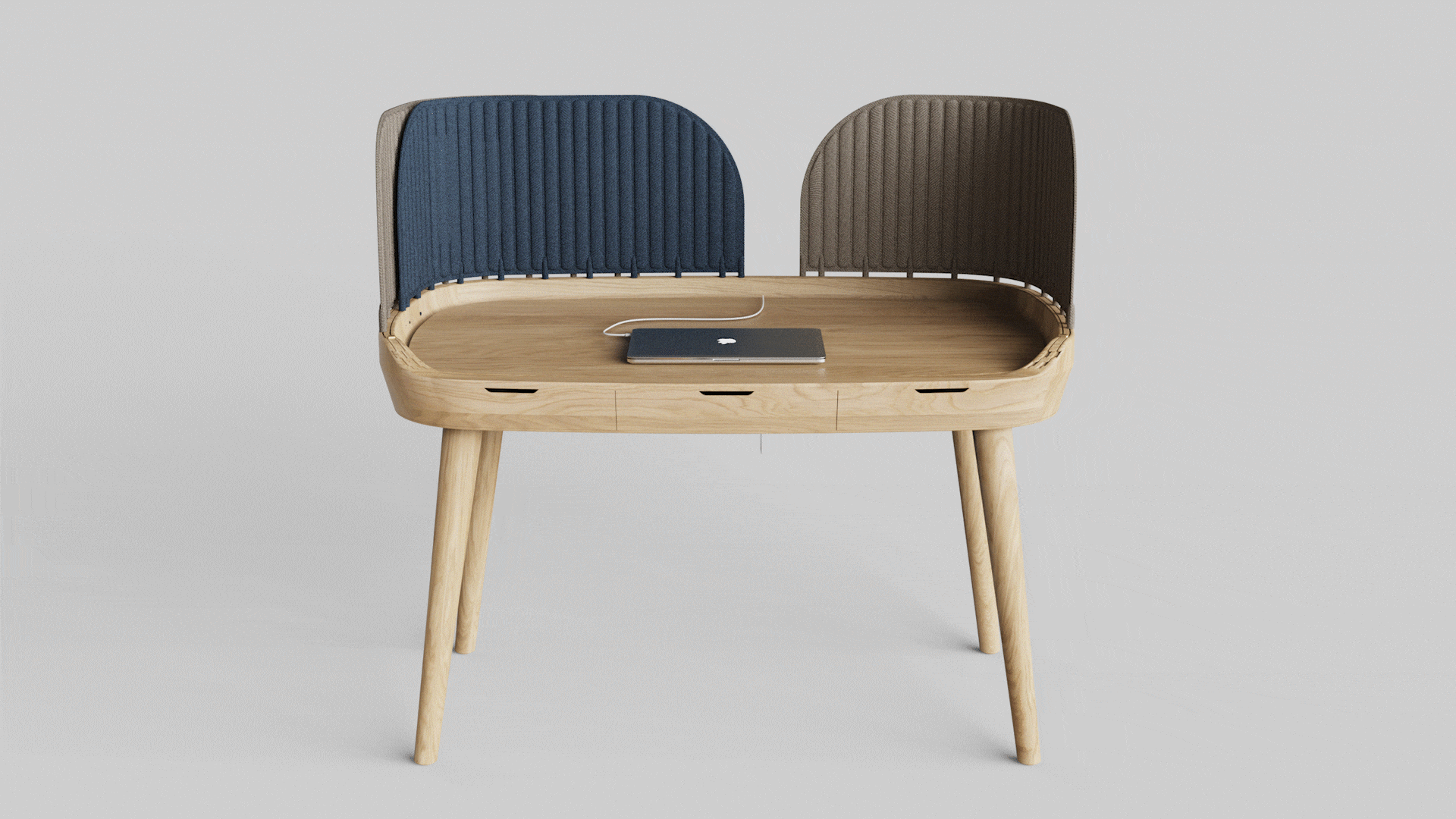
TABS Work Table
a work table with customizable rail modules
Duration: 1 month
Project Type: Personal Project
Designer: Pelin Özbalcı
In today's fast-paced work environment, staying focused is a constant challenge. Distractions come from every direction, whether it's the allure of multiple open tabs on our computer screens or the clutter of cables and small items scattered around our workspace. The struggle to maintain attention on a single task is real, affecting productivity and hindering the quality of work. With the increasing demand for flexibility in work setups, finding a solution that seamlessly integrates technology with traditional workspaces while addressing the need for organization and distraction-free zones becomes crucial. The problem lies in the absence of a practical and efficient solution that aligns with the dynamic nature of work, accommodating various materials, work styles, and storage needs without sacrificing aesthetic appeal. As we grapple with these challenges, there's a clear need for a thoughtful innovation that not only recognizes the complexities of modern work but also provides a tangible and user-friendly answer to enhance focus and streamline the work process.
The Problem
TABS addresses the pervasive issue of attention fragmentation and lack of organization in the modern work environment. By incorporating a unique "tab" logic, this innovative desk empowers users to focus on one subject at a time, eliminating the distractions caused by multiple open tabs on the computer. The double rail system offers flexibility, allowing users to customize their workspace with modular components made from three different materials: fabric, cork, and felt.
The Solution
The most important function of the movement of the tabs is that the subject being studied at that moment stands out with the Tabs that are easily drawn in front of the other subject that is not studied. Thus, when the user finishes studying a subject, they can block their way and prevent their mind from going in different directions.
In contrast to the tab modules that can be moved freely on the rails, the upper surface of the table is left plain. When viewed from the front, the table looks very plain and flat. When viewed from above, there is a space for cables to pass through and a space for storing small distractions. The aim here is to place small items that may distract the user on the back of the table so that they can only focus on their work on the Tabs.
There are three drawers just below the table. These compartments, which meet the storage needs of the user, blend into the side surface of the table. The sockets located just behind the table aim to prevent the appearance of crowded cables that may occur around the table.



















